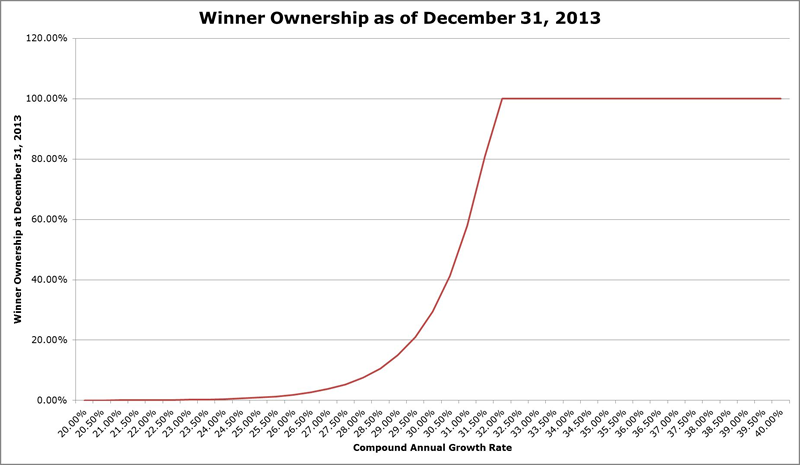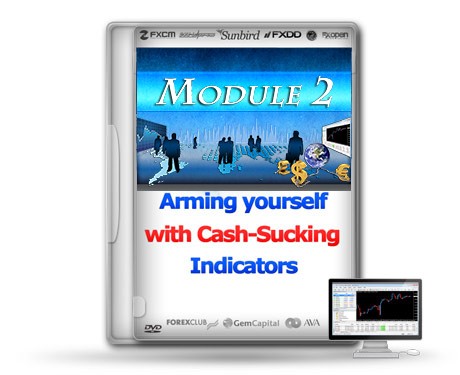The Only Indicator You Need to Beat the Market
Post on: 25 Июль, 2015 No Comment

By StreetAuthority. on August 22nd, 2012, 8:00 pm in Market Updates
Individual traders can succeed in the markets if they know their edge. That edge should include knowing what time frame to trade and which indicator to use. Some simple trading strategies can deliver reliable returns and could help you retire early, if you can avoid emotional responses to market turbulence.
Individuals who succeed in the markets generally apply a disciplined and patient trading strategy. The need for discipline is well-known, but patience is rarely talked about by traders. Patience is required to realize gains in the time frame that traders can do best in, which is usually based on weekly charts. Most traders are too impatient to accept the reality that they can't be day traders, which is one of the reasons most traders fail.
Day trading is no longer possible for individuals. High-frequency trading firms analyze prices within nanoseconds and there is no way an individual can compete in that environment. Trading with daily charts requires a great deal of time, and with full-time jobs and family obligations most people can't maintain the schedule required to succeed in that time frame.
Weekly charts, on the other hand, offer individual traders better odds of success because they don't require much time for analysis. After transaction costs. weekly trading systems are also often more profitable than daily strategies. Surprisingly, monthly charts can also be profitable for individual traders.
As an example, let's review some test results on systems that trade the PowerShares QQQ ETF (NASDAQ: QQQ). an ETF that tracks the volatile Nasdaq 100 index. Testing will cover the time period from Jan. 1, 2007 through August 2012, a time that included the worst bear market since the Great Depression and a fast-moving recovery from the bear market lows. The test will be long only, because most individuals do not trade on the short side of the market. (We will look at the reasons why individuals should take short positions in later articles.)
A simple stochastics indicator can be used as a complete trading strategy. We will be long when the 14-period stochastics line is above its 3-period moving average (the default indicator settings on most websites). The table below summarizes some key test results:
Using only a single indicator on a monthly time frame outperforms buy and hold by a small amount but significantly reduces the risk, assuming that risk is equivalent to the maximum amount of money lost during the test period. I believe this is a better measure of risk than the more academic definition of standard deviation because dollars lost are real values while standard deviations represent abstract concepts.
The moving average convergence indicator ( MACD ) can also be used as a stand-alone trading strategy. The results of this system, using the standard default settings of 12, 26 and 9 periods, are shown in the next table:
MACD reduces the risk in all time frames. Profits are also reduced, however, and you would underperform buy and hold in all time frames. Most traders would be unhappy with the underperformance no matter how much the risk is reduced. That is an emotional response, and during the long term, reducing risk while capturing almost all of the upside will be beneficial to traders.
Now we will do what most traders do add complexity without dramatically improving the results. In the final table, the two indicators are combined with both needing to be bullish in order to open a trade, which is closed when both indicators subsequently turn bearish .
With the more stringent requirements for a trade, it becomes possible to trade with daily charts. Those rules mean that traders will spend a significant amount of time in cash with this method, and since most traders lack patience, that is very difficult to do.

Several lessons about what tools work best for individual traders can be drawn from this exercise:
- Individual indicators can work well on weekly and monthly charts.
- Simple trading strategies like stochastics can beat the market.
- More complex trading strategies are needed to beat the market using daily charts.
Action to Take > For traders wanting to follow these systems, QQQ is currently bullish when applying stochastics, MACD or the combination of the two in all three time frames. Given the strong degree of confirmation from those indicators, QQQ is a buy.
In the future, if you only have a limited amount of time for the markets, you should consider applying the stochastics indicator on a monthly chart as your primary trading strategy. In fact, monthly charts and the stochastics indicator are the only two trading tools you will need for success.
Michael Carr
Michael Carr does not personally hold positions in any securities mentioned in this article. StreetAuthority LLC does not hold positions in any securities mentioned in this article.
This article originally appeared on StreetAuthority














